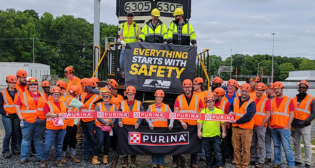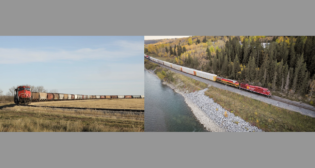
Lack of alternative is not a regulatory concept
Written by AdministratorRail shipper and carrier executives convened in San Francisco recently for the annual North American Rail Shippers Association meeting. Despite the anti-rail rhetoric of a minority of rail customers—who were for the most part absent—the meeting had the atmosphere of a reunion of old friends.
Customers were not necessarily sanguine about the rapid rate increases and deteriorating service they say they are experiencing. Professionals that they are, though, they understood the realities of the freight transportation marketplace. For the most part, they accept the railroad position that earnings must increase in order to finance and support expanding capital spending programs that are required if there is to be sufficient rail capacity to serve a growing economy. It is sort of a “pay me now, or pay me later” proposition.
When questioned, most rail customers said the same thing: They did not welcome the rate increases, but there is no real alternative.
Lack of alternative is not a regulatory concept. Rail shippers that truly have no alternative and are captive to a single rail carrier have recourse to the Surface Transportation Board, which administers the remaining pricing and service regulation provisions of the Staggers Rail Act of 1980.
There was considerable conversation about the June 22 STB hearing into the state of competition in the railroad industry, with customers and carriers trying to “handicap” the proceeding. Neither shippers nor carriers think the Board will do anything that would harm railroads or provide relief to shippers.
The shipper mood was one of concern but not the kind of anger that has marked other meetings. The degree of concern seemed based on the customer’s ability to deal with rate issues. There was acceptance that the supply and demand equation now favors the railroads, and taking rates up when they can is normal. Railroads have been open about their pricing strategies and rates are rising by roughly the rate of inflation plus one or two percent.
The scheduled appearance of Association of American Railroads executives and chief executives of Class I carriers was canceled at the last minute when Sen. Jay Rockefeller (D-W.Va.) scheduled a markup session for his bill that the railroads are concerned would reregulate them. They stayed in Washington to work the problem.
One significant change in the NARS program this year was the presentation of a panel of chief operating officers of the Class I railroads, including Ferromex and the Canadian carriers. The operating executives explained what they are doing to maintain and improve service quality, something the customers in attendance have not heard in the past.
Matt Rose, this year’s AAR chairman and CEO of BNSF Railway, reminded the audience in his keynote address of the massive capital spending programs under way at each of the Class I’s. Talking of recent deterioration in service, he said the railroads find themselves “chasing the traffic upward.” Laid-off crews are being recalled, new crews are being hired, and serviceable cars are being brought out of storage.
As is customary, carriers and shippers had extensive time to meet privately to discuss individual issues. Talk of specific rates was barred from the open sessions because of antitrust concerns, but there were no such restrictions on the private meetings.
Shippers and short line railroads increasingly are concerned that major railroads are putting their capital and focus into large volume shipments in unit trains and downplaying traditional small volume carload shipments. As major railroads abandoned, sold, and leased thousands of miles of light-density branch lines, the regional and short line industry segment became specialists in “first mile-last mile” pickup and delivery, a function the large railroads require but are not structured to provide themselves.
In a sign of the times, intermodal, which continues to grow faster than other lines of business, had its own time slot and panel at the NARS meeting. Railroads increasingly are diverting truck traffic from highways to rail.



